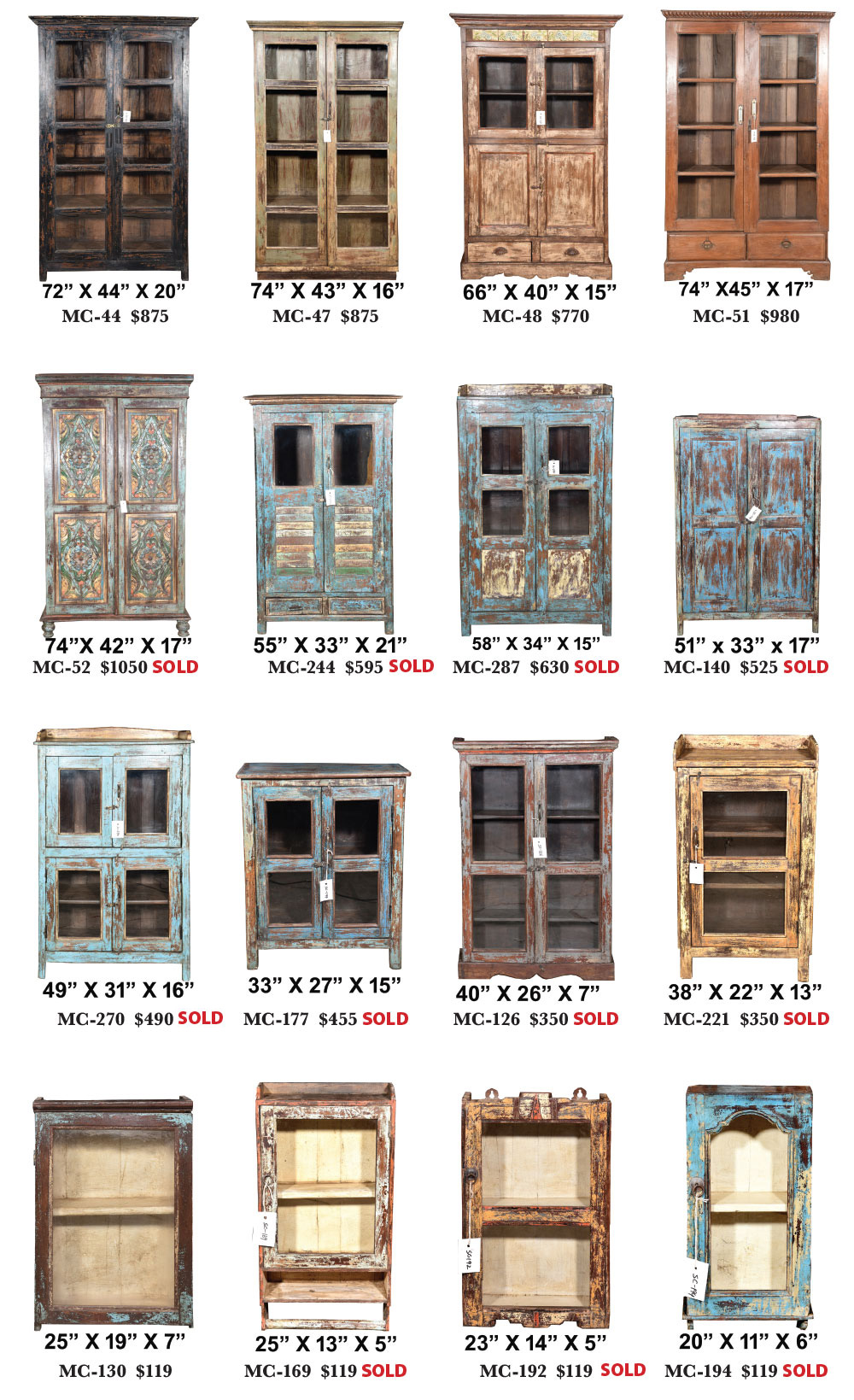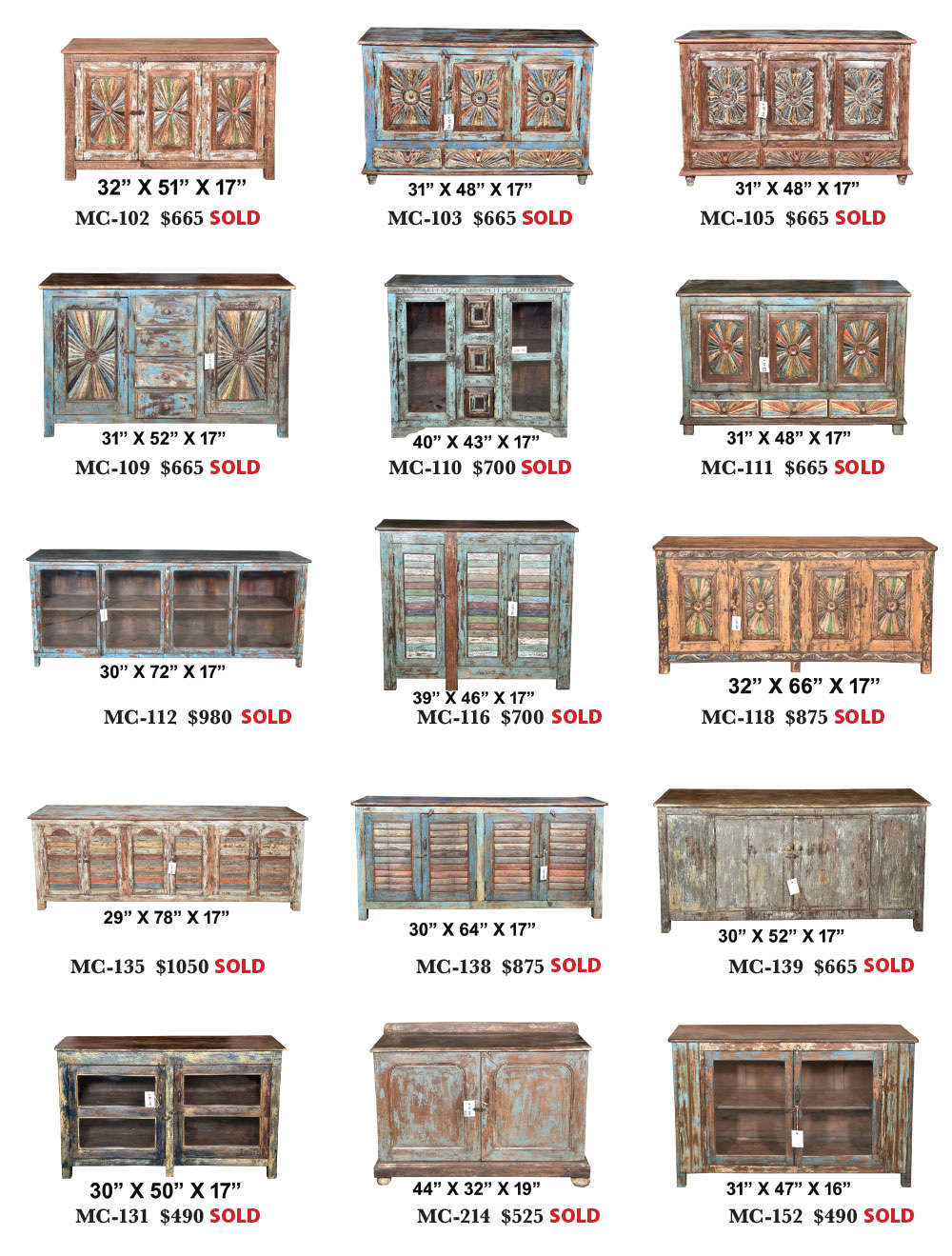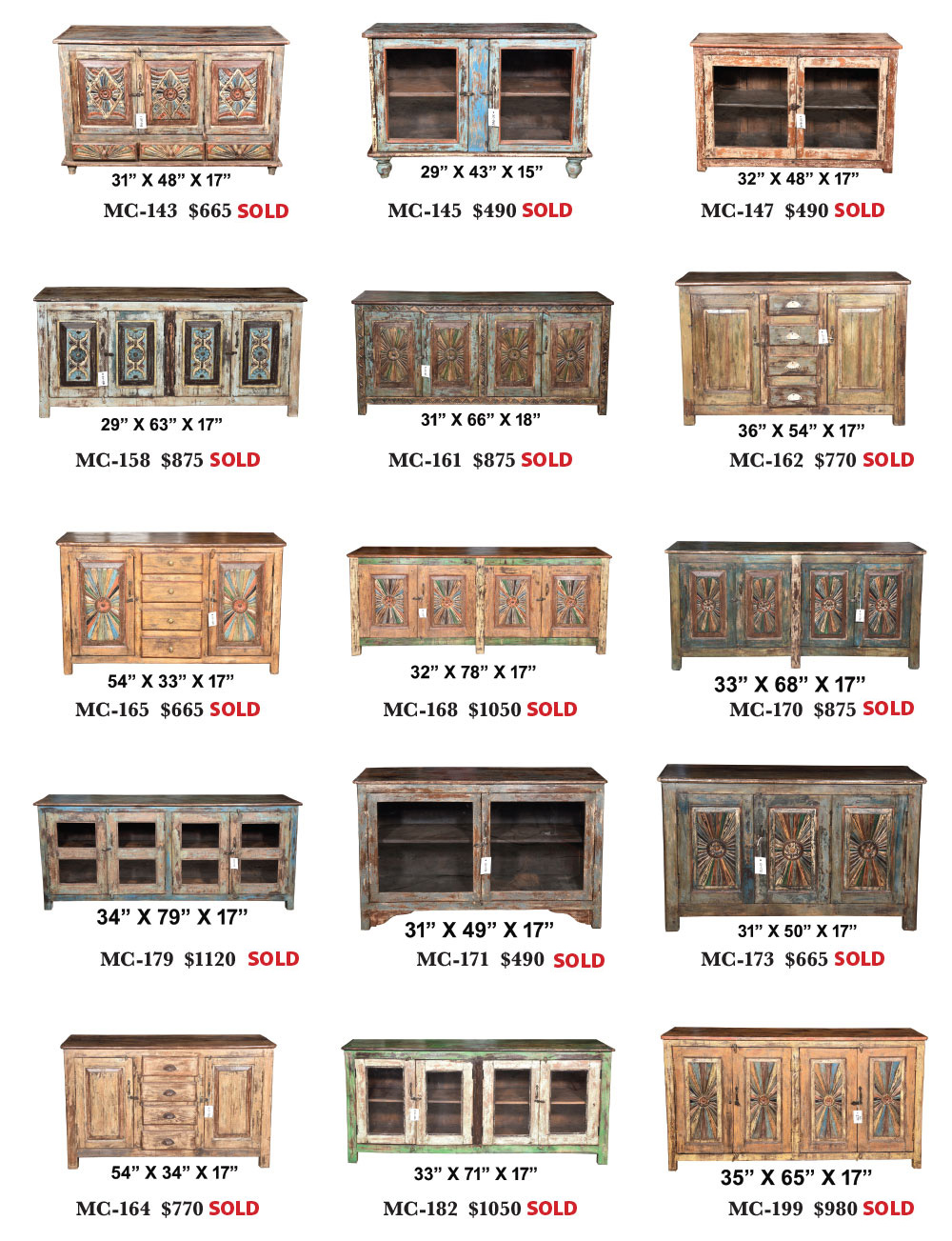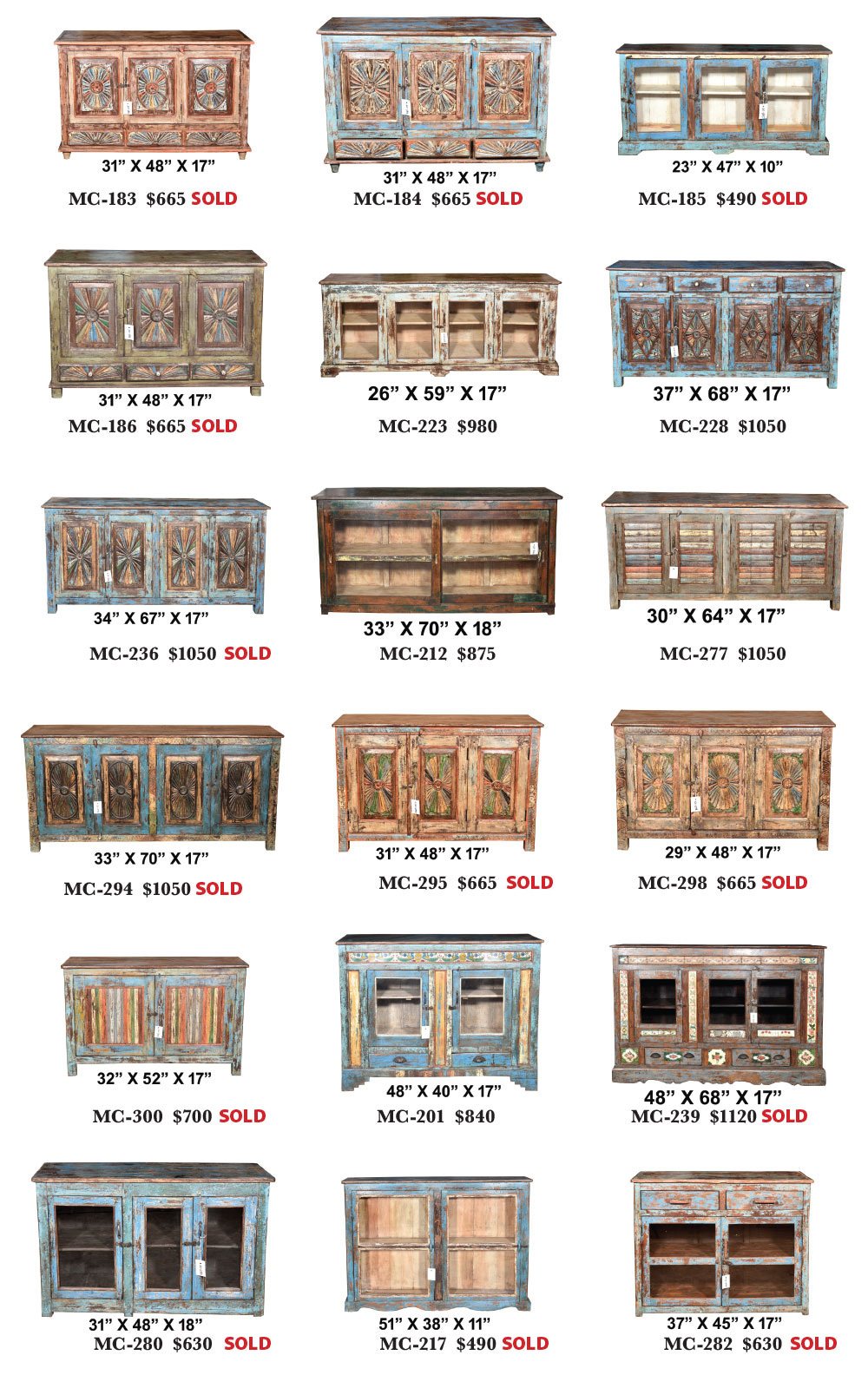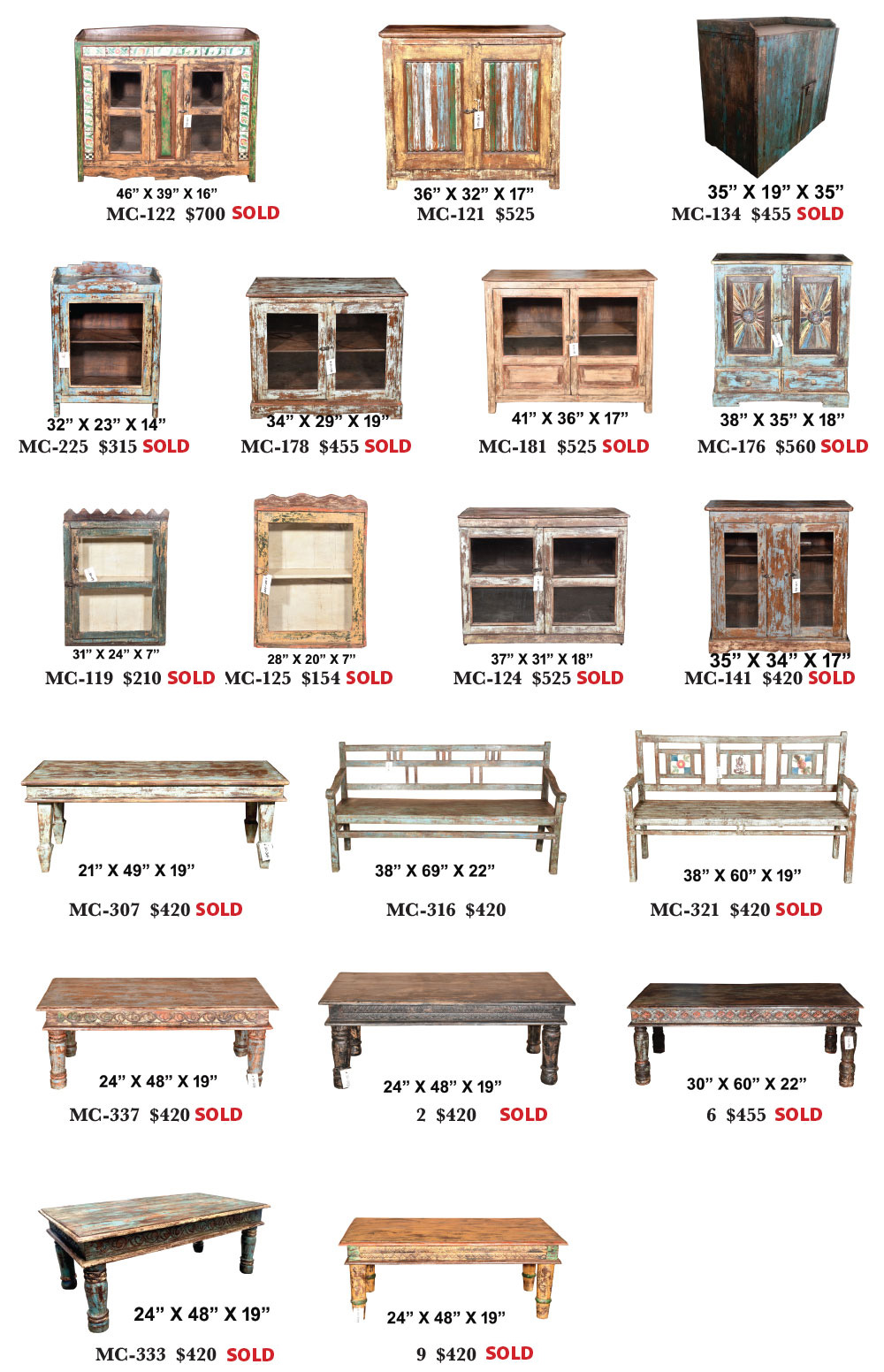The 30-Year, 30% Off Sale! Sale Prices Listed Below!
For decades, Material Culture has sourced and sold antique Anglo-Indian furniture in our retail store, owing to its great popularity, home utility, and bench-made quality—qualities sorely lacking in today’s contemporary, mass-manufactured, “disposable” furniture.
The adaptability of this furniture enhances its usefulness. Slim shelves become perfect spice or curio cabinets, while larger pieces fit seamlessly into dens, living rooms, or kitchens. The slim depth of this furniture allows it to fit more easily into rooms and hallways that would not accommodate bulkier forms, making it ideal for smaller urban apartments. Lastly, instead of ending up in the junk pile like much contemporary furniture, antique Anglo-Indian furniture can always be resold and find new homes for continued, reliable service.
For much of their history, most Indians did not use Western types of furniture in their homes, but rather low tables and cushions on the floor, for lounging, eating and sleeping, while Indian Royals also used ceremonial pieces like thrones. Starting in the 16th century, European conquests of various parts of India meant an influx over time of Portuguese, French, Dutch and English domestic habits, including furniture uses and styles. Desiring their traditional furnishings, Westerners asked native Indian craftsman to produce them with local materials. The result was numerous hybrid styles of furniture, used both domestically and for export back to Europe. Traditional Indian skills of intricate wood carving and inlay were often added to traditional Western forms; and indigenous woods like rosewood, padauk and teak replaced European oak, walnut and pine. The British Raj (1858-1947) had perhaps the longest lasting influence on Indian fusion furniture. Drawing heavily from Irish/English traditional country furniture, simple forms of paneled cupboards, cabinets, sideboards and tables were created that very closely resembled their models from the West. We have found this furniture category very popular, because it fits into people’s homes with a rustic charm. And a refurbished ‘shabby chic’ or cottage element is achieved from surviving remnants of original paint, and wooden panels removed, replaced with modern glass to modernize.


